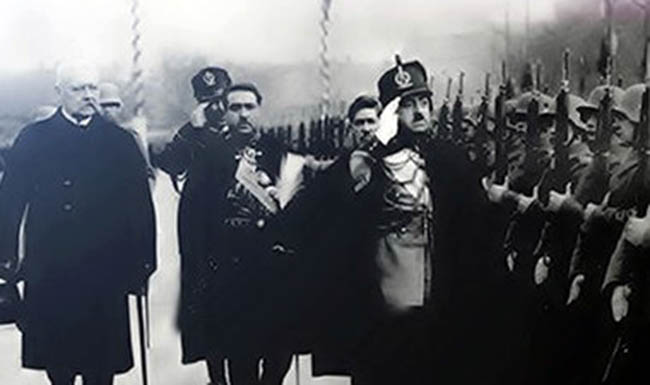Succeeding to the throne, Amanullah Khan declared independence in 1919 and pursued an independent foreign policy free from the influence of the British Rule and his rule was marked by dramatic political and social change. He channeled Afghanistan to democratization and fundamental reforms. Afghanistan’s first Constitution was approved during Amanullah’s reign by Jalalabad Loya Jirga (National Grand Assembly) and confirmed by Paghman Loya Jirga which included 1052 individuals from officers, clergy, tribal elders and Khans. He established constitutional monarchy and proclaimed equal rights for citizens regardless of their race, sex and sect.
Although the responsibilities and authorities of the king, ministers and many other institutions were determined in this constitution, and the “state council” was formed by appointed and selected members for offering consultation about legislation, the separation of powers and their independence were not stated and parliament, which is the beating heart of democracy, was not formed. However, it was a great step toward democracy.
Besides advancing a modern constitution that incorporated equal rights and individual freedoms with the guidance of his father-in-law and Foreign Minister Mahmud Tarzi, Amanullah used his influence to modernize the country. He created new cosmopolitan schools for both boys and girls in the region and overturned centuries-old traditions such as strict dress codes for women. He increased trade with Europe and Asia. His transforming social and educational reforms included: adopting the solar calendar, requiring Western dress in parts of Kabul and elsewhere, discouraging the veiling and seclusion of women, abolishing slavery and forced labor, introducing secular education for males and females, adult education classes and educating nomads. Many bylaws were approved during his reign, including the law of press which gave freedom of the press to the public and “Aman-Afghan Journal” was launched on August 12, 1919. Similarly, the first non-governmental journal “Anis” was published by Ghulam Mohyiddin Anis in 1926 and radio broadcasts were introduced to people. He worked to put in place progressive reforms in the country.
The role of Soraya, who was the daughter of a well-known and respected Afghan intellectual and poet, Sardar Mahmud Beg Tarzi, is highly worthy of mention. Soraya worked actively to liberate the women of Afghanistan, grant them their rights and encouraged them to participate in nation building. She set up the first women’s hospital and girl’s school in the country. As minister of education, she also arranged to send 18 young women to Turkey to seek higher education in 1928.
In one of her famous speeches she gave at the seventh anniversary of Afghanistan’s independence from the British, she said, “It (independence) belongs to all of us and that is why we celebrate it. Do you think, however, that our nation from the outset needs only men to serve it? Women should also take their part as women did in the early years of our nation and Islam. From their examples we must learn that we must all contribute toward the development of our nation and that this cannot be done without being equipped with knowledge. So, we should all attempt to acquire as much knowledge as possible, in order that we may render our services to society in the manner of the women of early Islam.”
However, Amanullah sought to change Afghan society, where traditional cultures held strong sway, overnight. In late years of his reign, he had a trip to Europe along with his wife. Returning from the trip, he was deeply influenced by European development and believed that women’s hijab was an obstacle before democracy. He urged that Afghan women should not observe veil, his main intention was to ban burqa, a traditional head-to-toe covering with meshes on the face that is still used by some Afghan women but has no religious aspect. Since Afghanistan was not ripe for this sudden change, this created a backlash and a reactionary uprising known as the Khost rebellion was suppressed in 1924.
Amanullah took high steps to bring democracy in Afghanistan and served the nation with good intention. Unlike his predecessors, he did not discriminate against the nation on the basis of their sex, creed and color and considered women’s position equal to men. During his reign, women attended schools and involved in social and cultural activities. In other words, the role of Afghan women was not restricted within the four walls and he sought to eliminate the traditional and tribal structures, where women had no rights and liberty. He disapproved of women’s subjugation to men and tried to eliminate the patriarchal system which was embedded in Afghans’ culture, mainly in tribal belts.
Home » Opinion » Afghanistan’s Independence
Afghanistan’s Independence
| Hujjatullah Zia

